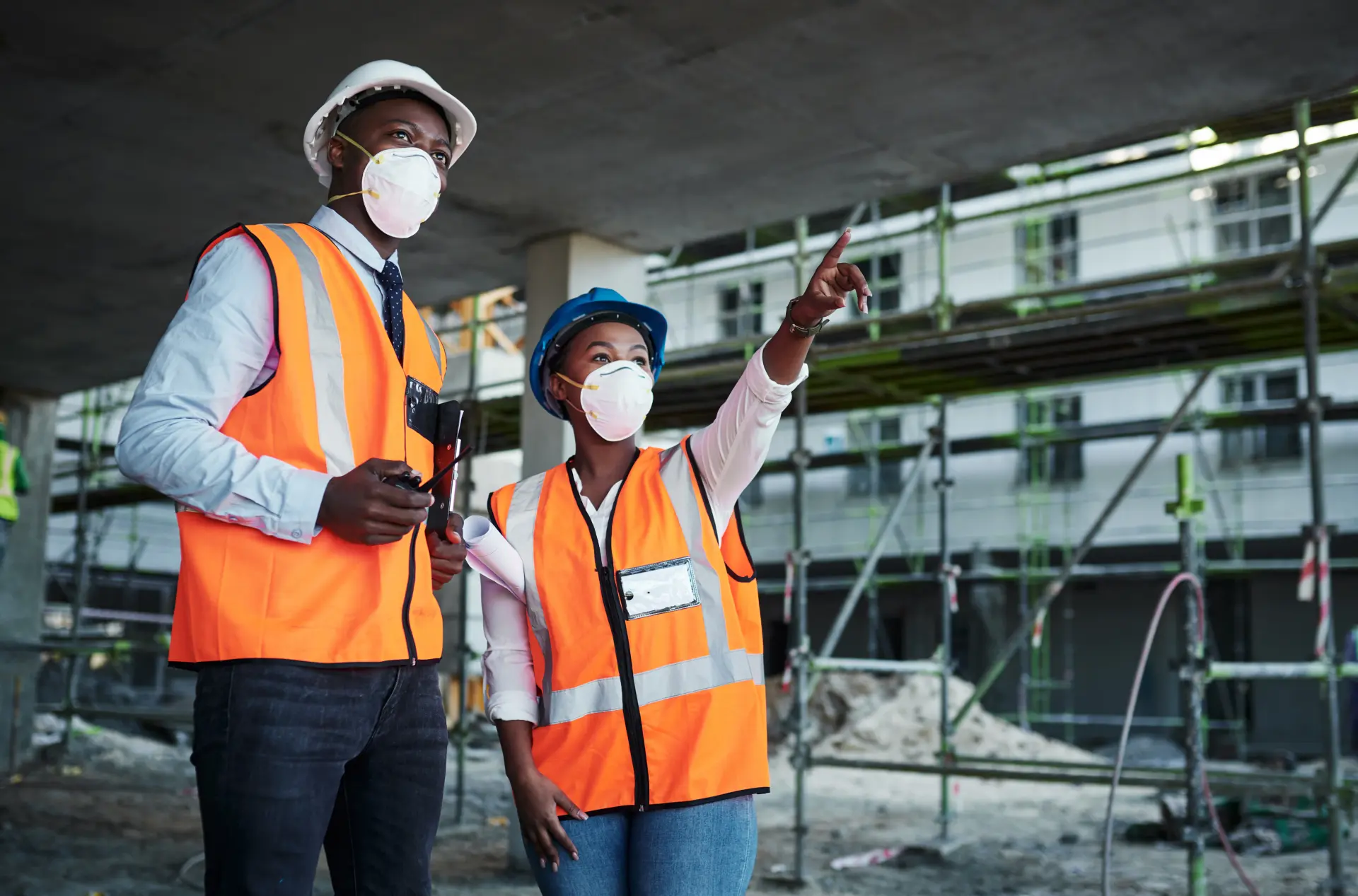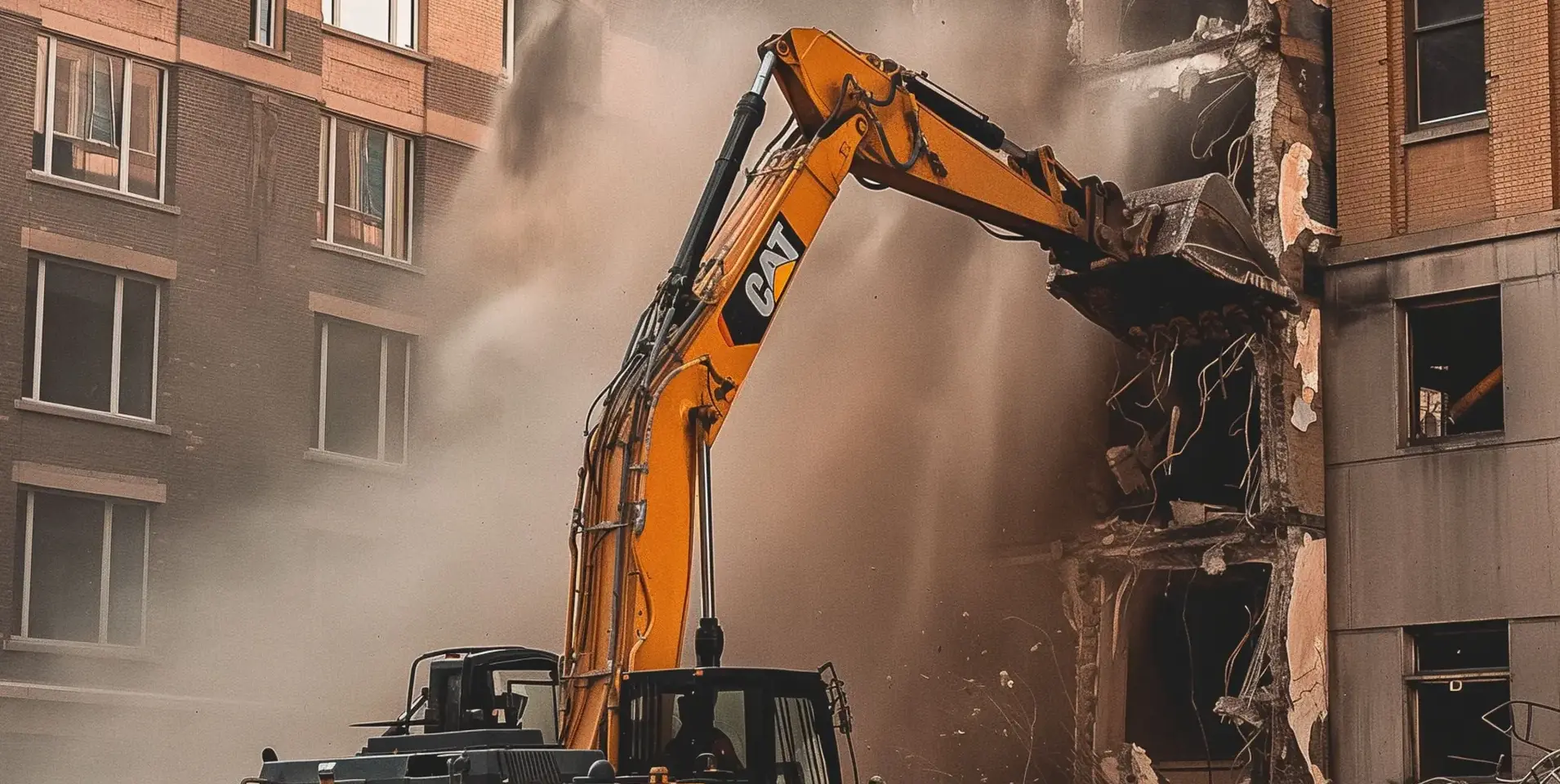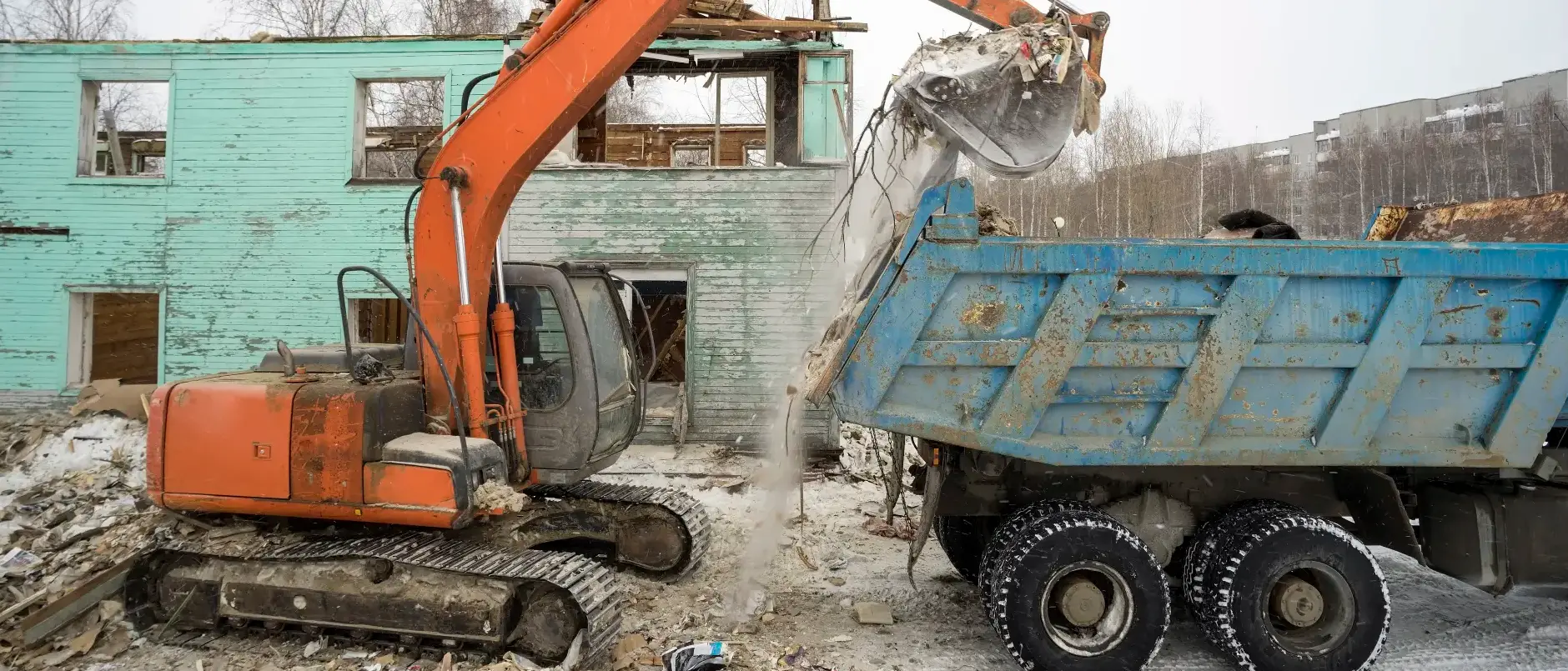Discover common challenges in demolition projectsand How to overcome them. We look at hidden structural issues and hazardous materials, and learn how to manage them effectively.
Unexpected Structural Issues
One of the most common challenges during demolition projects is the discovery of unexpected structural issues. Even with detailed surveys and planning, hidden problems can be uncovered once walls, ceilings or floors are removed.
These can include weakened foundations, rotting timber, corroded steel, or cracks in supporting walls. Such issues may not be visible during the initial assessment and only come to light once the demolition work is underway.
When these problems are found, they can cause delays as the site may need to be reassessed by structural engineers to ensure it remains safe. Additional work may also be required to stabilise or repair the affected areas before demolition can continue. This usually results in higher costs and longer project timelines, which can be frustrating for clients and contractors.
Addressing these problems thoroughly and as soon as possible is completely necessary for safety and for avoiding any further complications. By planning for the possibility of structural surprises and allowing some flexibility in budgets and schedules, both contractors and clients can be better prepared to handle them when they arise.
Handling Hazardous Materials Safely
A key challenge in demolition projects is dealing with hazardous materials, which must be handled with care to take care of the workers and the surrounding environment.
Older buildings in particular often contain materials that were once widely used in construction but are now known to be harmful. Identifying these risks early and managing them correctly is an essential part of any safe demolition plan.
One of the most well-known hazardous materials is asbestos, which was used in insulation, ceiling tiles, roofing sheets and floor coverings. When disturbed, asbestos releases fibres that can cause serious lung diseases. Another material often found in older properties is lead-based paint, which can be harmful if flakes or dust are inhaled or ingested, especially by children.

Mould and fungus pose significant risks when found in damp areas, as they can lead to a number of dangerous respiratory problems if spores are released during demolition. Alongside this, outdated electrical wiring, chemicals from old storage areas, and even contaminated soil around industrial sites may be discovered and require specialist treatment.
To manage these risks safely, trained professionals must carry out assessments and use protective equipment, controlled removal methods and proper waste disposal procedures.
Strict regulations also decide how hazardous materials are handled, ensuring they are removed without endangering workers, residents or the wider environment. By following these safety steps, demolition projects can progress smoothly while protecting everyone involved.
Limited Access or Tight Workspaces
Another common challenge in demolition projects is working in areas with limited access or spaces that are too tight to work in. This can happen in older buildings, city centres, or properties with narrow hallways, small rooms, or restricted entry points.
Limited space makes it harder to bring in large equipment or machinery, meaning more of the work must be done by hand, which can slow down progress. It also increases the risk of accidents, as workers have less room to move safely while handling heavy tools or debris.
In some cases, restricted access may also make waste removal more difficult. Instead of using large skips or particular disposal methods, you may need to carry debris out in much smaller loads, and this can add extra time and effort to your project.
Careful planning is required to overcome these challenges. Contractors often use compact tools, create clear pathways, and schedule work in stages to make the best use of the space. Good, thorough organisation and safety checks are especially important in tight work areas, making sure the project can continue properly while keeping everyone on site safe.
Meeting Safety Regulations and Standards
Safety is one of the most important parts of any demolition project, and strict regulations exist to protect both workers and the public. Every stage of a rip-out or demolition must follow legal requirements set by building authorities and health and safety bodies.
These rules cover areas such as how hazardous materials are managed, how waste is disposed of, and what protective equipment workers must use on site. Following these standards is not only a legal duty but also helps you eliminate any accidents and reduce risks to health.
In the UK, several laws and regulations apply directly to demolition work. The Health and Safety at Work Act of 1974 places a specific duty on employers to make sure they protect the health and safety of their workers and anyone affected by their work.
The Control of Asbestos Regulations 2012 set out strict rules for identifying and safely removing asbestos, while the COSHH (Control of Substances Hazardous to Health) Regulations 2002 control the handling of harmful substances such as lead or chemical residues. The CDM Regulations (Construction, Design and Management) 2015 need proper planning, risk assessments and communication between contractors to ensure safe working practices throughout the project.

Before work begins, contractors carry out detailed risk assessments to identify potential dangers and put control measures in place. This may include shutting off utilities, securing the site with barriers, and ensuring all workers are trained in safe procedures.
Frequent inspections are definitely needed during the project, as a way to confirm that safety measures are being thoroughly followed. If any new risks are found, changes are made to the process or resources. Following these rules allows your contractors to avoid fines or legal issues, and also guarantees that the demolition process is done safely and responsibly.
Coordinating with Other Trades and Services
Demolition projects rarely happen in isolation. They are often the first step in a larger renovation or construction plan, which means careful coordination with other trades and services is essential. Electricians, plumbers, structural engineers and waste management teams may all need to be involved at different stages of the rip-out.
Good communication between these groups is essential for avoiding major delays, making sure everybody on-site is safe, and helping keep the project running as it should. For example, electricians and plumbers are usually needed early on to disconnect or reroute utilities before demolition begins.
Structural engineers may be needed if any of the load-bearing walls are affected during demolition tasks, while waste removal teams must be scheduled to clear debris without slowing down progress. Coordinating these services will take plenty of detailed planning, with clear timelines and responsibilities agreed in advance.
Updates and site meetings are also great to help, as these allow you to resolve issues quickly if any plans need to change. By working together, trades and services can complete demolition and building tasks much more thoroughly, preventing conflicts and making sure that the site is properly prepared for the next stage of work.
At Welcroft Lee Logistics, we're here to provide our customers with demolition projects and guidance on how to carry these tasks out safely and thoroughly. Give our team a call today, and we'll do all we can to help you and assist your next project.





